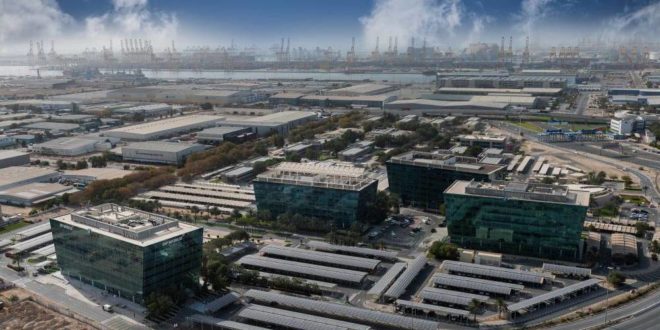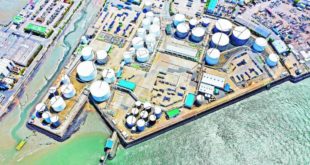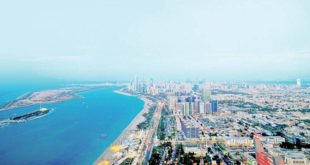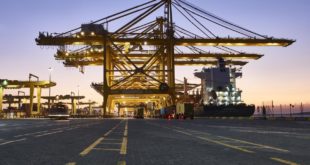Aug 16th
The first half of this year witnessed the highest ever demand for industrial and logistical spaces in Dubai, since 2020, driven by companies moving their operations to Dubai, and the tendency of many companies to strengthen their presence in the region by establishing regional centers in the emirate, according to a recent report by Savills. ».
sectors in the lead
The high demand for logistical and industrial spaces in Dubai, supported by the growth of the local industry movement, came in a direction attributed to the industrial strategy adopted by the UAE, “Project 300 Billion”, which aims to strengthen the industrial sector in the Emirates, and make it a global center for exports and re-exports, in addition to Creating new job opportunities.
Michael Fenton, Director of Industrial and Logistics Services at Savills, said: “Companies related to the oil and gas sector, e-commerce services, logistics services and indoor vertical farms were among the most important catalysts for raising the demand for warehouse leasing activity in the first half of 2023 in Dubai.”
E-Commerce
The report stated that the e-commerce sector is one of the important drivers for raising demand during the first half of 2023 due to the increasing demand from companies in Dubai. Where companies build a large main warehouse near the main infrastructure; Such as a port, followed by the development of a delivery facility, usually of a smaller size, or a storage site termed the “last mile”.
The increased use of smaller units closer to Dubai is partly due to the increased demand for express delivery platforms.
The e-commerce sector will continue to drive the demand for warehouse space in Dubai. Each 1% increase in population requires an additional 0.5% of warehouse space.
logistics
Third-party logistics companies have also contributed to the increase in demand. Among the companies that have acquired significant space, J&T Express, the Indonesian delivery giant, has significantly strengthened its operations throughout Dubai and currently leases approx. 161,000 square feet of space across Dubai Industrial City, Dubai Airport Free Zone and Dubai South, and has plans to increase warehousing space to 430,000 square feet by 2026.
Economic partnerships
On the other hand, oil and gas companies were also among the largest lessees of warehouses and industrial space across the UAE, while the Comprehensive Economic Partnership Agreement between the UAE and India, along with the UAE’s plans to expand the agreement, to include Indonesia, Turkey and Colombia, is energizing the market for lessees.
Thanks to the emirate’s strategic location, the “China + 1 strategy”, and the close economic relations between China and the UAE, Dubai has benefited from Chinese companies setting up stores in the city.
demand sites
Swapnil Pillay, Associate Director of Middle East Research at Savills, said: “The leasing activity was concentrated in prominent customs-driven storage centers on: Al Quoz, Dubai Investment Park and National Industries Park.”
Indoor vertical farm operators in the retail, entertainment, e-commerce and FMCG sectors were among the top tenants.
The rise of Chinese companies
There was also a significant increase in storage capacity and demand in the Jebel Ali Free Zone (Jafza). Some vital areas have benefited from the close economic ties between India and China. The free zone recorded a 30% year-on-year increase in new customer registrations.
The number of Chinese companies operating outside the free zone will quadruple in 2022, while the number of Indian companies will grow by 30% year on year.
To keep up with the growing demand for these spaces, the free zone has launched nearly 500,000 square feet of world-class space, which is expected to be completed in 2025.
Dubai South
Another important small area that witnessed a significant increase in occupancy rates was the industrial area in Dubai South. As it contains a lot of land areas that provide opportunities for warehouses that are subject to customs procedures and outside the customs area, with dual purposes.
During the first half of the year, Amazon was among the major companies that leased space within the free zone.
The presence of many e-commerce companies, along with the initiatives launched by the EZDubai e-commerce zone in Dubai South, the continuous supply and development of many residential projects around these areas contribute to its long-term growth.
rental prices
Rental rates continued to rise across a variety of regions, with an increase in rental activity and levels of related inquiries.
When conducting a semi-annual comparison, it was found that the rental values of “class A” properties increased by an average of 14% in the National Industries Park, 8.6% in Dubai Investments Park, and 8% in Al Quoz.
“Class A”
Rents for “Grade A” warehouses in Dubai South increased by 7.1% on average, and by 6.7% in Jebel Ali Industrial.
In light of the scarcity and abundance of spaces classified under “Grade A”, there was a rental increase in “Grade B” prices in most small business markets.
Al Quoz witnessed the largest increase in “class B” development projects, by 37.5%, followed by the National Industries Park, by 11.1%, and Dubai Investments Park, by 6.7%.
The availability of logistics and industrial space in Dubai has increased in line with the increase in demand. Nearly one million square feet are currently being developed in Jafza, Dubai South, Dubai Investments Park and National Industries Park.
 Media ININ Economy We Trust
Media ININ Economy We Trust








